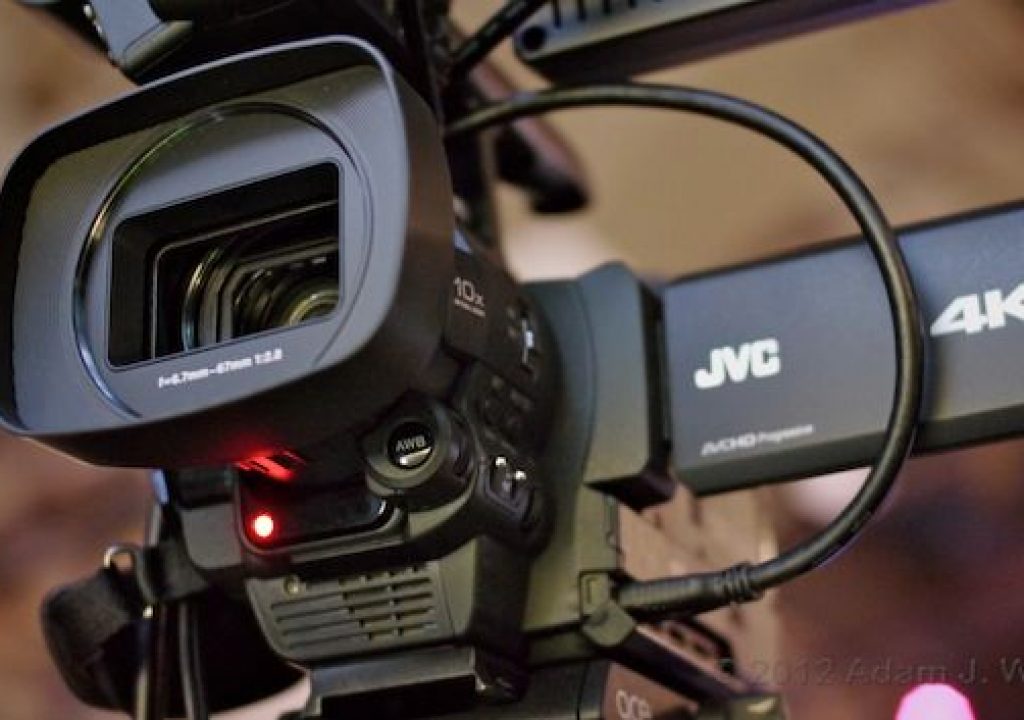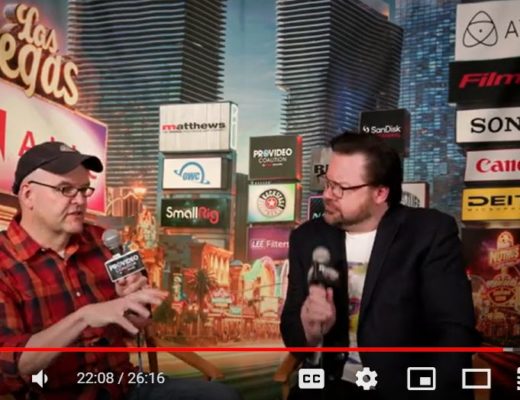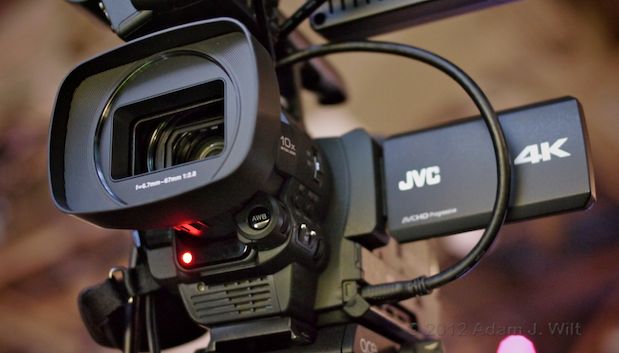
JVC’s 4K tinycam is actively cooled via grilles in front and back.
I’ve already covered the basics of what Sony and Panasonic announced, as well as looking at Canon’s C500 and the BMD Cine Camera, but JVC also had interesting camera announcements worth looking at. And of course that’s not all there was to see…
JVC first…
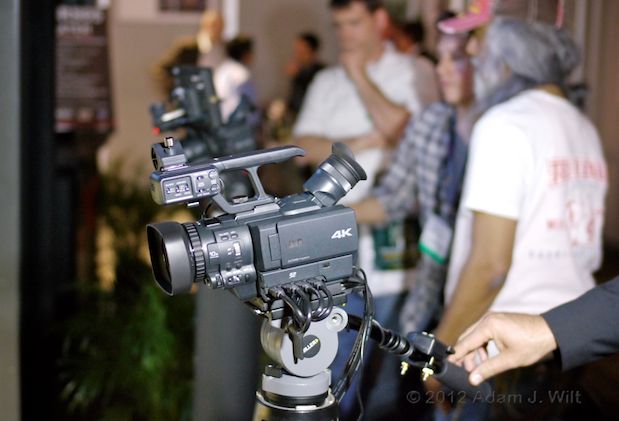
JVC’s 4K tinycam.
That tiny little 4K camcorder that JVC has been showing off for the past nine months or so (mounted on a perforated base blowing cooling air up into its open underside!) was shown as a complete, sealed camcorder capable of operating on its own, without cooking itself to death from the effort of processing 4K images in a fist-sized camera.
There’s a ventilation grille in the front, and one in the rear. Internal fans suck air through the front grille and send it woofing out the back, considerably warmer.
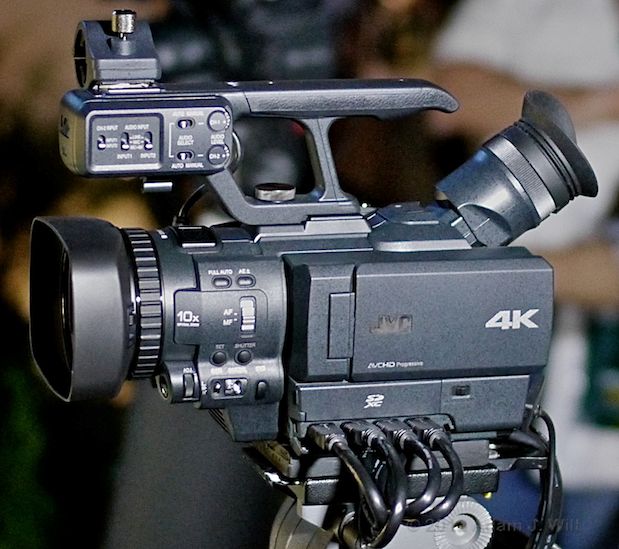
The 4K tinycam, close up. Note the four (!) HDMI connectors.
The camera captures 4K (actually quad HD, 3840×2160) as four HD-sized quadrants to four separate SD cards… and displays the output using four parallel HDMI cables. At NAB, the camera fed a 4K Toshiba display; JVC doesn’t have its own display capable of handling the camera’s output (those 4K displays I saw tended to cost about US$1000 per diagonal inch, and no such display, other than Canon’s prototype, was smaller than 50″!).
JVC’s other big news on the camera front was the HM600/650 handheld HD camcorders. JVC has long had sleek, low-rise shoulder-mount camcorders, as well as palm-sized tinycams, but they haven’t had 3-chip “Handycam” style handhelds for some time.
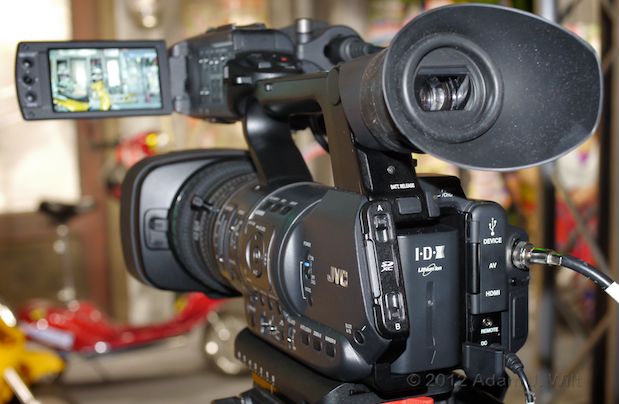
The JVC HM600 and 650 are versatile, feature-laden handhelds with dual SD slots.
The HM600 and 650 fill that gap, recording full-res 1920×1080 from three 1/3″ CMOS sensors to your choice of MPEG2 (at 35 Mbps, like XDCAM EX; or 19 / 25 Mbps, like HDV), AVCHD, or standard-def h.264. The cameras will wrap these clips as .MXF (650 only), .MOV (for FCP), .MP4 (XDCAM EX compatible), or as AVCHD (presumably in a Blu-ray-style directory structure).
What’s more, the 650 adds simultaneous proxy recording, a GPS, and WiFi—both for remote control and for FTP video upload. Both Sony and Panasonic talked up IP connectivity for their cameras via add-on modules, but JVC has taken things to a new level, with iOS and Android apps to control the cameras, and the ability to use 4G smartphones/tablets with tethering capability to send clips from the field to the station. The proxy clips are small and transmit quickly, and JVC says they’ll be of sufficient quality to air breaking news with. In the meantime, the full-res clips are also being transmitted, allowing them to be used for later broadcasts. Very cool.
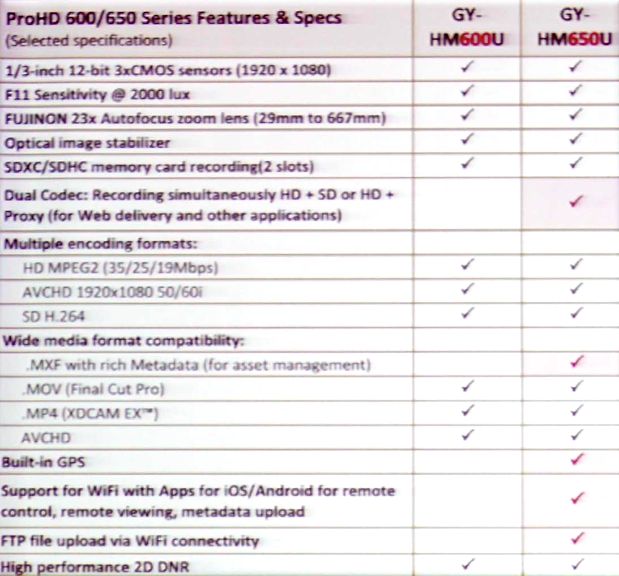
At JVC’s press lunch, Dave Walton showed a chart comparing the HM600 and HM650.
The cameras themselves (in prototype form only; shipping won’t be until later this year) are of fairly conventional design, with the familiar JVC four-way controller amidships.
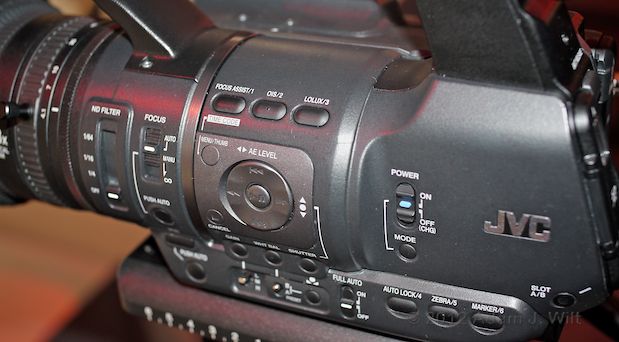
HM600/650 side controls follow a standard layout, with the addition of JVC’s signature four-way rocker.
The flip-out LCD, however, folds against a pod at front of the top handle, as on the Sony PMW-EX1 or the Canon XF300/305. Unlike those cameras, the JVC’s design leaves the LCD upright, as if it were folding against a camcorder body: this makes it just a little bit easier and faster to flip open or closed.
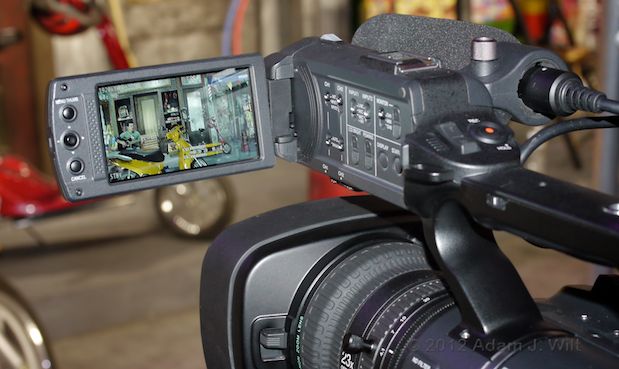
The HM600/650’s LCD need only flip out; no need to then flip it up.
The lens has an unusual zoom: although the zoom ring has hard stops and calibrated focal lengths, it’s a servo controller, not a mechanical control. On the prototypes, the zoom servo lagged a fast spin of the zoom ring, breaking the illusion of direct coupling; I hope JVC is able to tighten up this control loop prior to release.
Sony
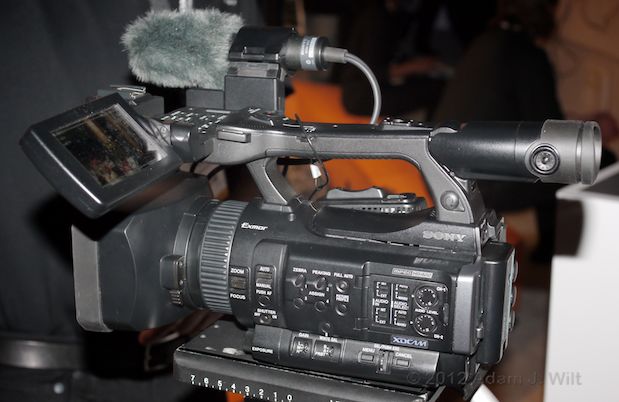
The PMW-100: Sony’s response to the Canon XF105?
The single-chip PMW-100, at first glance, looks like a cost- and weight-reduced re-rendering of the PMW-EX1, much as Canon’s XF100/105 is a single-chip version of the XF300/305. But the big news for this small camera is that it can record 50 Mbps 4:2:2 MPEG-2 in MXF wrappers, in addition to the usual 35 Mbps 4:2:0 MP4 files.
So it really is a challenger to the small Canon with its 50 Mbit 4:2:2 recording, and marks Sony’s first handheld with a high(er) bitrate 4:2:2 onboard recording. We can only hope that the next-generation 3-chip XDCAM EX handhelds also have this higher quality, more broadcaster-friendly recording capability.
Panasonic
I just wanted to show the HPX255 (the remote-controllable brother of the HPX250) and its remote control unit.
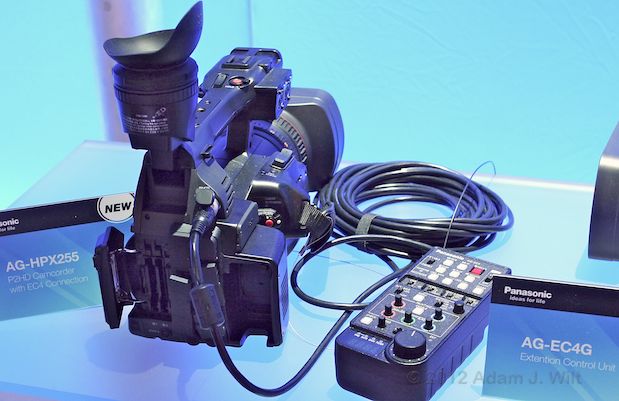
Panasonic HPX255 camcorder with EC4 remote “paintbox”.
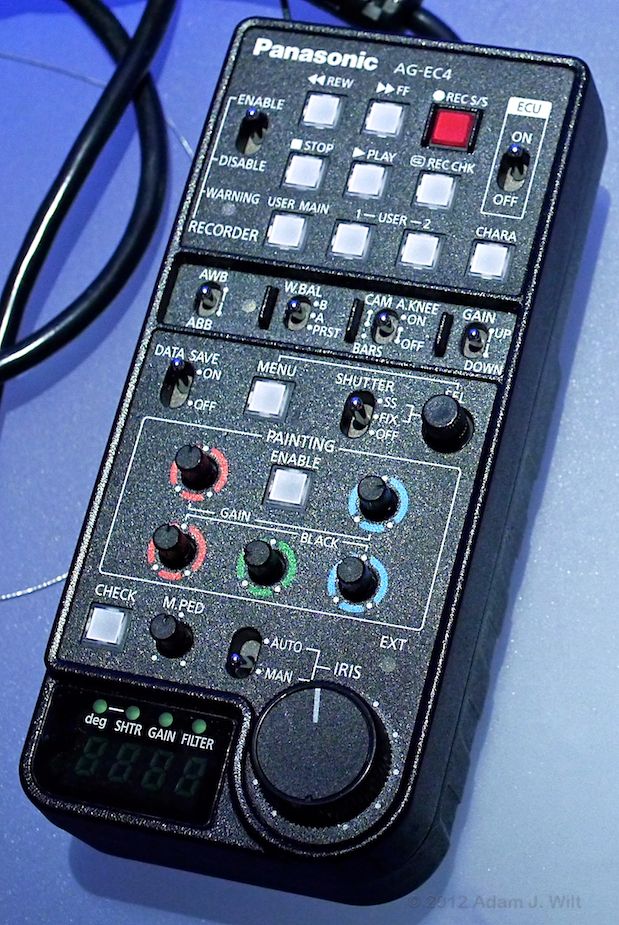
The EC4 Extension Control Unit is a serious, robust controller.
This is the first time I’ve seen a handheld camera made available with a full-up, heavy-metal, no-compromises remote control panel of this caliber.
Arri
Last year at NAB, Arri announced the Alexa M, a version of the Alexa separating the chip block from the recorder section and associated electronics. It does make for a considerably smaller, lighter package.
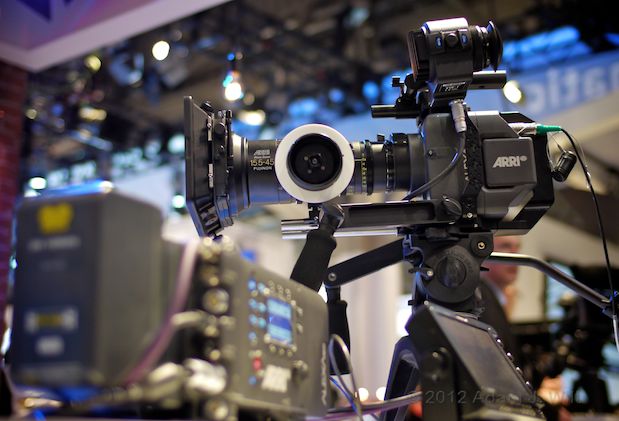
ARRI Alexa M handheld rig, with the recorder half of the camera in the foreground.
Zeiss
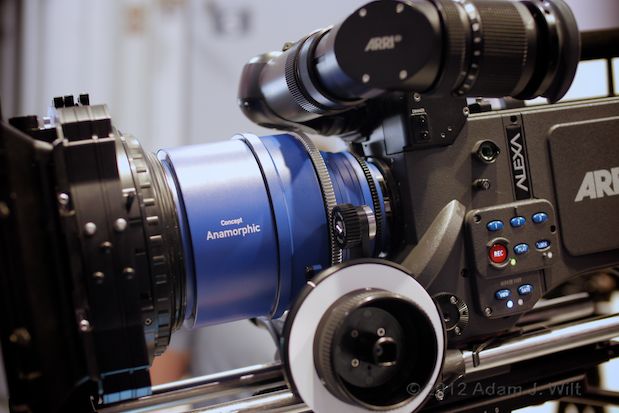
Zeiss concept anamorphic lens.
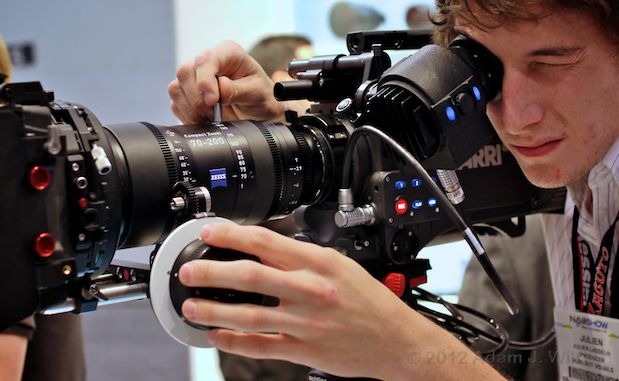
Zeiss lightweight 70-200mm T2.9 zoom.
Canon
I’ve already talked about the C500 and the C300, but it’s not fair to ignore the broadcasting side of the business, Canon had mockups of two new, large box zooms; here are pix of the 80x lens.
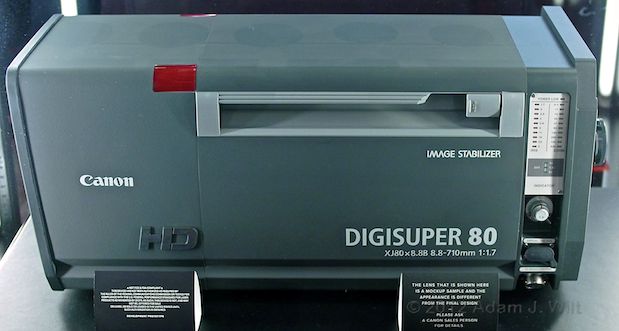
Canon Digisuper 80 broadcast zoom lens, side view.
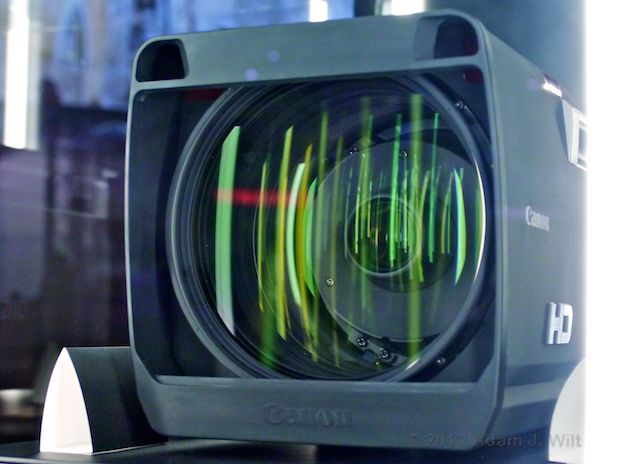
Canon Digisuper 80 zoom lens, front element.
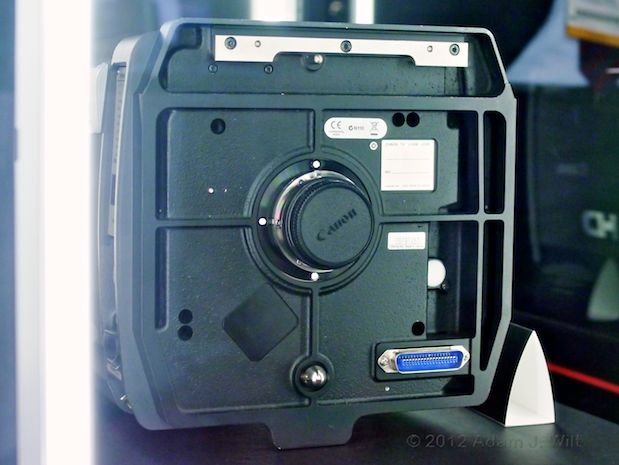
Canon Digisuper 80 zoom lens, rear view with lens mount and electronics connector.
That silver bar across the top is part of the mounting hardware; you’re not going to hang a lens like this off a B4 mount unsupported!
FASTEC TS3Cine
The Sony NEX-FS700 wasn’t the only new slo-mo camera at the show, and the BMD Cine Camera wasn’t the only upright, touchscreen-driven, tablet-style camera shown.
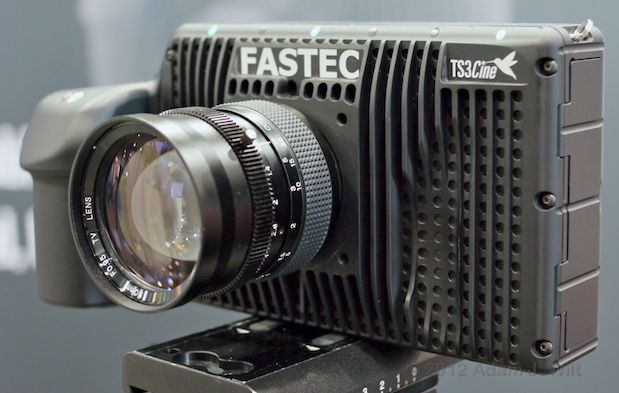
FASTEC’s TS3Cine slo-mo camcorder.
The FASTEC TS3Cine captures 1080p at 500fps and 720p at 720fps. Window down the sensor further, and shoot faster… up to 20,000fps.
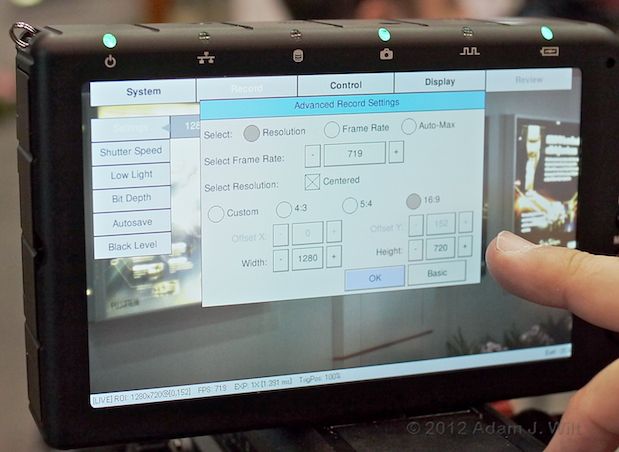
TS3Cine touchscreen controls.
Like the BMDCC it’s a touchscreen camera. Like the FS700, it shoots slo-mo. But it’s a bit pricier than either one; just under $23,000. But it does come with both a Nikon mount and a and C-mount, and a 128GB internal SSD.
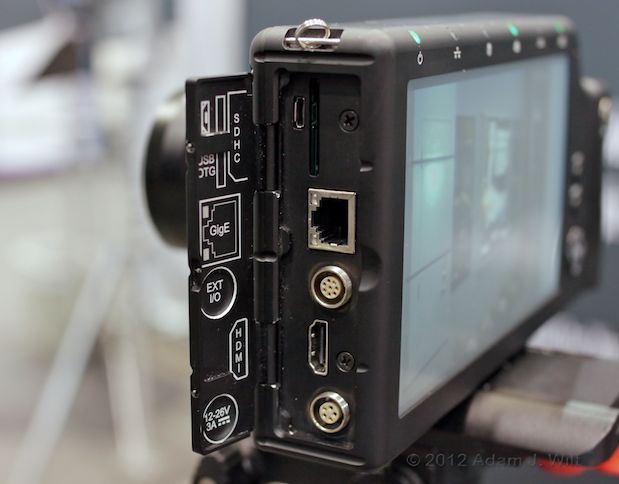
TS3Cine I/O and storage ports.
Gigabit Ethernet is very handy for offloading data in a jiffy.
DENZ
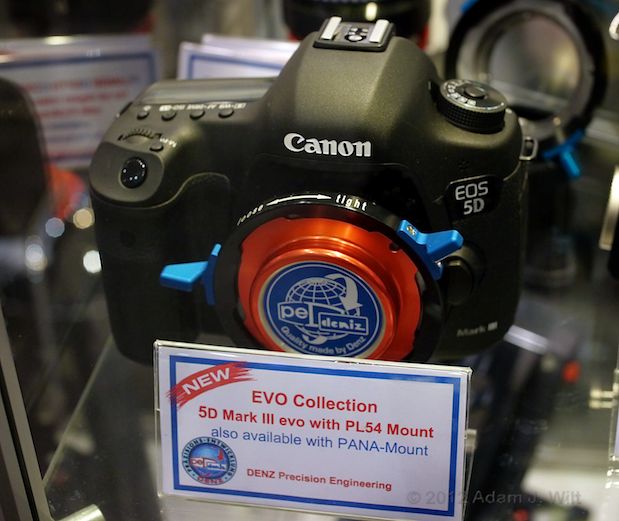
If you insist on PL- or Panavision-mount cine glass for your 5D Mk III, DENZ has you covered.
DENZ Precision Engineering’s EVO Collection consists of Canon 1D Mk IV, 7D, 5D Mk II, and 5D Mk II bodies reworked for PL- or Panavision mounts (despite the PL versions being tagged PL54, they all have the standard 52mm flange depth). DENZ also has a selection of support gear (cages, rods, follow-focuses, dutch heads, etc.), all with a typical German attention to detail: pleasing stuff.
Camargus
Camargus is building a camera array and stitching software, letting a single installation capture an entire sporting area as one big image. You can then pan, tilt, and zoom within this massive panorama.
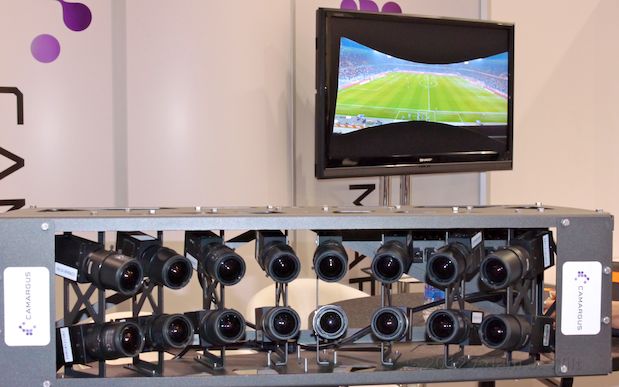
CAMARGUS captures the entire soccer field as one big panorama.
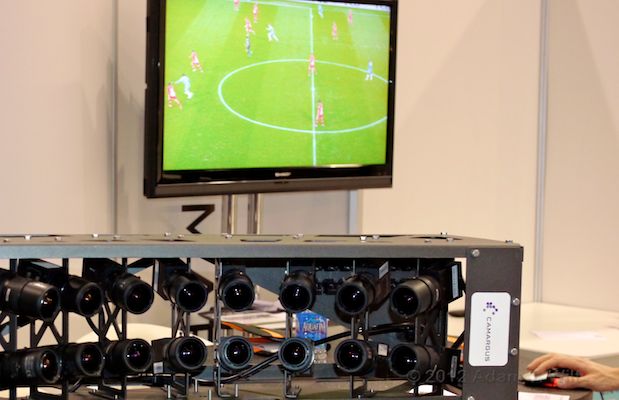
You can then zoom in and pan around to get your final HD image.
Ikonoshop (again!)
OK, I admit it: I’m a sucker for the A-Cam dII, a mimimalist, 16mm-sized-sensor HD camera recording CinemaDNG files to an onboard magazine. Here are more shots from the A-Cam’s visit to the Blackmagic Design booth.
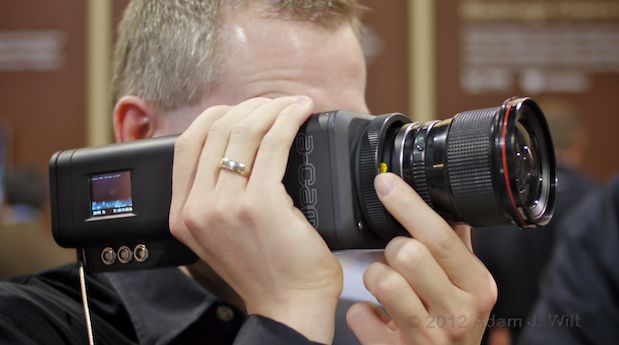
Ikonoskop A-Cam dII in use: compact uncompressed camcorder.
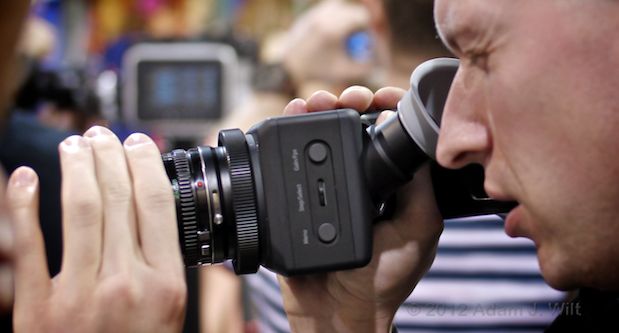
Ikonoskop A-Cam dII from the operator’s side.
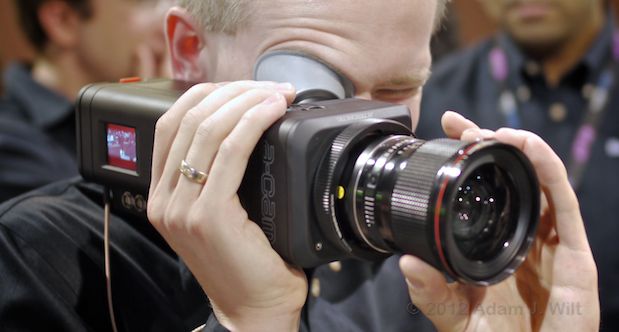
Ikonoskop A-Cam dII: note the angle-your-head-towards-it eyepiece.
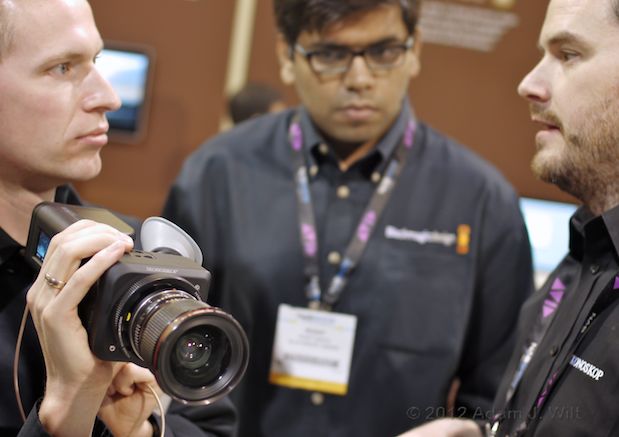
Ikonoskop’s Lukas Eisenhauer shows off the A-Cam dII.
Disclosures: I attended NAB on my own dime, with a press pass to save the cost of admission. The NAB did not provide the pass in exchange for any promise of positive coverage, nor did they influence me in any way before or afterwards.
There is no material connection between me and any of the manufacturers covered in the article, and nobody offered any inducements for favorable coverage (other than appearing at the show and having interesting things to look at).

Filmtools
Filmmakers go-to destination for pre-production, production & post production equipment!
Shop Now